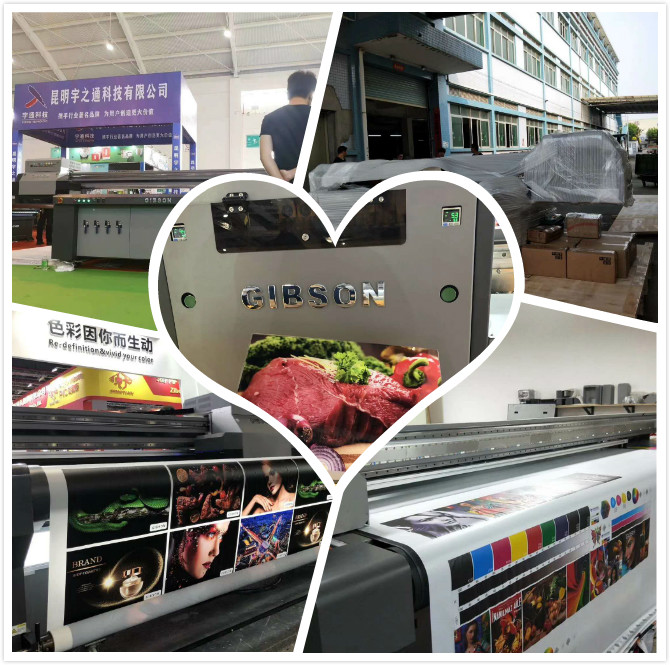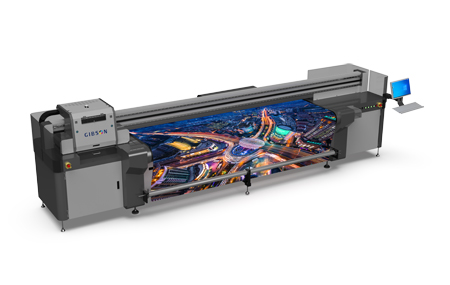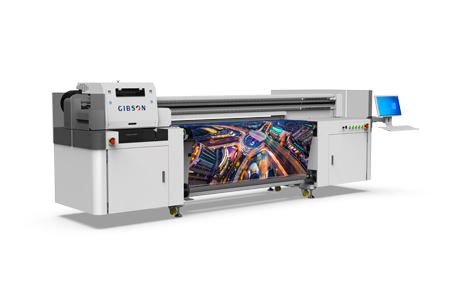What should we pay attention to when UV packaging printing encounters plastic film?
Website Editor:GIBSON │ release time:2021-06-15
In recent years, plastic film materials are often used in the packaging and printing industry. UV printing on these materials is different from traditional corrugated paper or white cardboard. It is necessary to consider how to make UV ink/varnish adhere firmly to the surface of the plastic substrate. That is, the problem of adhesion. GiBSON will give you a specific explanation:

1. Surface tension of plastic substrate
When printing on plastics, the surface tension of the plastic substrate is the first factor to be considered. Many plastic films have very low surface tension before they are processed. Generally, they need to be surface-treated to increase the surface tension of plastic substrates. After processing, they generally reach 40 dyne/cm or even higher. Usually, plastic substrate suppliers have surface treatment on the plastic, but the treatment effect will soon be lost.
For printing plants, in-line processing is the best solution to ensure that the surface tension of the plastic substrate remains within an acceptable range during printing. Corona discharge (oxidation) treatment is the most common treatment method, it is used in the surface treatment of various plastic films, and will not damage those temperature-sensitive plastic substrates. Corona discharge uses high-frequency high-voltage or medium-frequency high-voltage discharge to treat the surface of the plastic to activate it and make it porous, so as to improve the adhesion of the plastic film surface to the ink and improve the printability of the film. For example, after the commonly used PE (polyethylene) film undergoes corona discharge treatment, unsaturated bonds such as carboxyl groups and carbonyl groups are formed on the PE molecular chain.
The PE molecules are converted into polar molecules, which increases the surface energy. Generally, the surface tension of PE is increased from 31 dyne/cm to 39-40 dyne/cm after treatment, which increases the wettability and adhesion of the PE film to UV ink/varnish, thereby improving the firmness of the imprint degree.
The flame method is more used in the surface treatment of high-temperature resistant plastic products. Under the action of instantaneous high temperature, the plastic removes oil stains on the surface and melts the surface layer to improve the ink holding ability; chemical treatment is also used, but this method is usually Used in conjunction with the corona discharge treatment method, the chemical treatment method uses an oxidant to treat the surface of the polyolefin plastic to generate polar groups on the surface, so that the surface of the plastic substrate can be well wetted and adhered to the UV ink/varnish . In order to test the surface treatment effect of plastic substrates, plastic film printers are best equipped with dyne test pens.
After the treated plastic film, the surface tension of the ink is lower than the surface tension of the plastic film. Similarly, in order to make the varnish wet well on the surface of the ink and firmly adhere to the surface of the ink, the surface tension of the varnish should be lower than the surface tension of the ink. Therefore, UV ink formulations are very particular about the selection of raw materials in order to obtain acceptable surface tension. Research on a variety of ink formulations found that the surface tension of solvent-based inks is generally lower than that of other types of inks, so it can be wetted and spread on the surface of a variety of plastic films. Therefore, the surface treatment of plastic substrates, especially when printing with UV ink, is particularly critical.
Surface tension value of commonly used plastics in UV plastic printing (temperature: 20 degrees Celsius)
Surface tension of plastic substrate (dyne/cm)
Polyethylene (PE) 31
Polypropylene (PP) 34
Polyvinyl chloride (PVC) 33-39
Polystyrene (PS) 33
Polyester (PET) 43
Polyvinylidene chloride (PVDC) 40
Nylon 46
2. Expansion and permeability of plastic substrate
Unlike many commonly used printing papers and cardboards, the surface of the plastic substrate does not allow the ink/varnish to penetrate into the micropores.
However, some plastic substrates will swell when they come in contact with some UV ink/varnish raw materials. Therefore, using this feature to make plastic substrates used in conjunction with certain UV inks, so that the ink/varnish can penetrate into the interior of the plastic substrate. During curing, due to the internal penetration of the ink/varnish, a strong adhesion effect can be formed between the ink/varnish and the surface of the plastic substrate. In addition, the workshop temperature can be increased to enhance the penetration effect between the plastic substrate and the ink/varnish, which is also one of the ways to improve the adhesion between the UV ink/varnish and the plastic film.
3. The glass transition temperature of the ink (Tg)
In physics, glass is formed when certain substances are lower than or equal to the "Glass Transition Temperature" of the substance. Compared with ordinary ink/varnish, the composition of UV ink/varnish generally contains some materials with smaller molecular weight, and the ink layer formed by reaction of these materials during curing is thicker and has a higher degree of cross-linking. At the same time, the glass transition temperature (Tg) of the film layer after UV ink/varnish curing is higher, and the film layer is harder, so it has good abrasion resistance and chemical corrosion resistance.
If the Tg of the film is higher than the working temperature in the bronzing or laminating process, the UV film in the finished product will not be able to firmly adhere to the gold foil or composite plastic film. UV inks/varnishes prepared with low Tg materials can adhere to gold foil and composite films well in the post-printing process. Sometimes, in order to make the hot stamping or filming go smoothly, the working temperature of the process has to be lowered.
4. Degree of curing
For any kind of UV ink formulation, the appropriate photoinitiator must be selected to optimize the performance of the ink layer after curing. Each UV ink/varnish formula works with a specific and sufficient amount of UV energy. If the spectral band and power of UV energy change, it will affect the performance of the ink layer after curing.
On the surface of the plastic substrate, you may feel that the UV ink/varnish has been cured, but in fact, it is likely that the inside of the entire film is not completely cured. The degree of curing close to the bottom layer of the film is critical to obtaining good adhesion. The inside of the film and the bottom layer are not completely cured, so the penetration of UV ink/varnish in the plastic substrate is meaningless. Once the curing energy changes, the surface tension of the film will also change, which will ultimately affect the smooth completion of the subsequent post-printing process.
The plastic packaging market is an exciting market, and UV inks/varnishes are commonly used materials for plastic packaging printing. Fast curing means higher production efficiency, and not requiring heat to dry the ink means less impact on the environment and workshop.
- Color bar test boject banding2021-7月-08
- How to solve the problem of UV lamp of UV flatbed printer?2021-6月-20
- Troubleshoot the problem of UV printer not producing ink2021-6月-18
- What should we pay attention to when UV packaging printing encounters plastic2021-6月-15
- Those materials that need to be coated before UV printing2021-6月-13
- The key to the use of UV flatbed printers to control costs2021-6月-10
- What is the difference between uv light curing machine and uv flatbed printer?2021-6月-08










